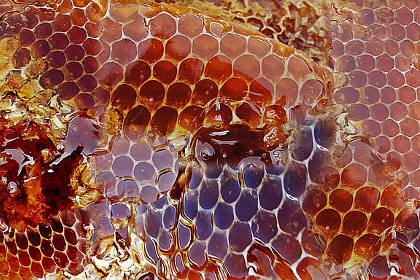
Massive Honey Contamination Revealed
The U.S. Food and Drug Administration (FDA) quietly began testing a small number of foods for glyphosate earlier this year, and so far the results are not reassuring, including in foods widely considered to be pure and natural, like honey.
November 15, 2016 | Source: Mercola.com | by Dr. Joseph Mercola
The U.S. Food and Drug Administration (FDA) quietly began testing a small number of foods for glyphosate earlier this year, and so far the results are not reassuring, including in foods widely considered to be pure and natural, like honey.
Glyphosate, the active ingredient in Monsanto’s Roundup herbicide, is the most used agricultural chemical in history — and was recently classified as a probable human carcinogen — but the U.S. remains largely in the dark about just how much glyphosate residue is found on commonly consumed foods.
The U.S. Food and Drug Administration (FDA) quietly began testing a small number of foods for glyphosate earlier this year, and so far the results are not reassuring, including in foods widely considered to be pure and natural, like honey.
Research by an FDA chemist and a colleague from the University of Iowa revealed glyphosate residues of 653 parts per billion (ppb) in some honey samples — an amount that’s more than 10 times the European limit of 50 ppb.1
Other samples contained residues ranging from 20 ppb to 123 ppb. Sadly, in an internal email obtained through a Freedom of Information Act request, another FDA researcher complained that no honey (even “organic mountain honey”) appeared to be free of glyphosate, as reported by The Huffington Post:2
“It is difficult to find blank honey that does not contain residue. I collect about 10 samples of honey in the market and they all contain glyphosate.”
How Does Glyphosate Find Its Way Into Honey?
Honey is not a “crop” sprayed with relentless amounts of herbicides the way other crops, like genetically engineered corn, are. So why is it turning up contaminated nonetheless?
Glyphosate is virtually everywhere in the U.S. Since 1996, its has risen nearly 15-fold, according to a study published in Environmental Sciences Europe.3 Since glyphosate was introduced in 1974, 1.8 million tons have been applied to U.S. fields, and two-thirds of that volume have been sprayed in the last 10 years.
Bees, as pollinators, travel from plant to plant. With grasslands being increasingly converted into genetically engineered (GE) corn and soybean fields where glyphosate is amply sprayed, it’s easy for them to become contaminated and then transfer that contamination to their honey.
Darren Cox, president of the American Honey Producers Association, told The Huffington Post:4
“It’s a chemical intrusion, a chemical trespass into our product … We have really no way of controlling it. I don’t see an area for us to put our bees. We can’t put them in the middle of the desert.
They need to be able to forage in ag [agricultural] areas. There are no ag areas free of this product [glyphosate].”
Beyond honey, glyphosate has also been detected in blood, breast milk and urine samples. Common breakfast foods, including oatmeal, bagels, coffee creamer, organic bread and even organic, cage-free, antibiotic-free eggs, have also tested positive for glyphosate residues, as have organic wine and beer.5,6
Are Bees Being Killed by Chemical Cocktails?
Glyphosate is only one type of pesticide that bees have to contend with. Research published in the journal Nature Communications revealed that pollen collected next to cornfields is contaminated with up to 32 different pesticides.7
While certain classes of pesticides, like neonicotinoids, have been implicated in bee deaths, it’s becoming clear that exposures to potent chemical cocktails may be causing deleterious, and as yet unknown, effects.
New research — the first to systematically assess multiple pesticides accumulated in bee colonies — has revealed, however, that the mixture of chemicals, not the dose, may be the deadliest factor of all.
The study, published in Nature Scientific Reviews, found 93 different pesticide products in the bee colonies they tested. Dennis vanEngelsdorp, an assistant professor of entomology at the University of Maryland, said in a press release:8
“We found that the number of different compounds was highly predictive of colony death, which suggests that the addition of more compounds somehow overwhelms the bees’ ability to detoxify themselves.”
The researchers tracked not only the total number of pesticides found in honeybee colonies (91 in all) but also the pesticides found above a minimum level of toxicity. Each colony was given a “hazard quotient,” which represented the total toxicity of the combined pesticides present.
All of these measures were associated with an increased risk of colony death or loss of the queen bee. There is only one queen bee per hive. She mates once and then is fertile for life, laying up to 2,000 eggs per day to sustain the colony. If the queen bee dies, the colony is at risk of collapse.
Also concerning, the study found “an abundance of fungicides inside the hives,” and while such products have been regarded as safe for bees, the study found their presence was “linked to imminent colony mortality.”9
